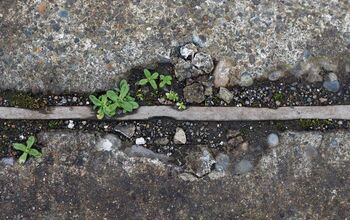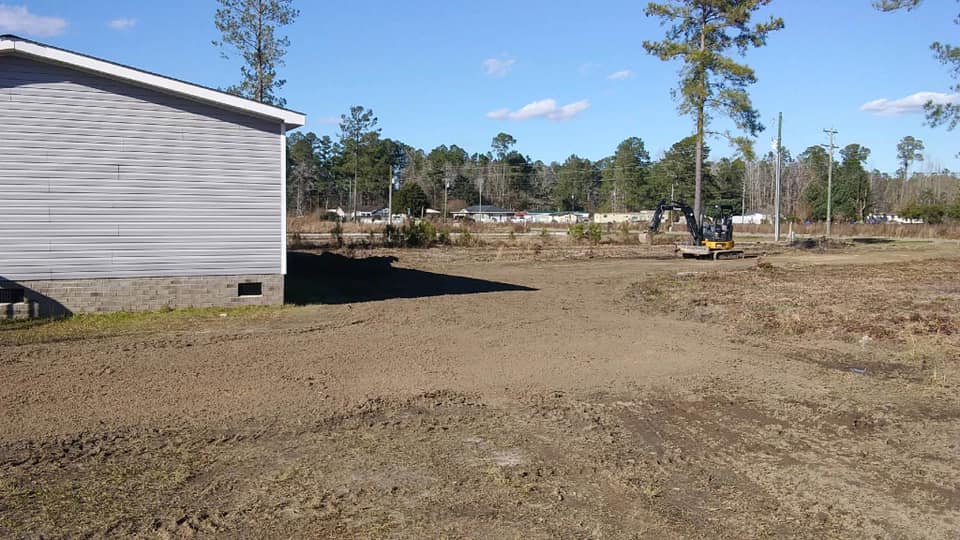Do you dread driving or walking through your muddy driveway after a rainy day? Is the muddy mess ruining your shoes and making your car look like it just went off-roading? If so, it’s time to take action and learn how to fix a muddy driveway. In this comprehensive guide, we’ll explore proven techniques to transform your muddy nightmare into a smooth and stable surface, ensuring a hassle-free experience every time you enter or leave your property.

Image: upgradedhome.com
Understanding the Muddy Dilemma: Causes and Impacts
A muddy driveway is a common problem faced by many homeowners, especially during wet seasons or in areas with poor drainage. It occurs when water accumulates on the driveway surface, saturating the soil and creating a soft and unstable base. This can be attributed to various factors, including:
- Improper Drainage: If your driveway lacks proper drainage, rainwater will pool on the surface, leading to mud formation.
- Compacted Soil: Over time, vehicles driving on the driveway can compact the soil, reducing its ability to absorb water and promoting muddiness.
- Poorly Graded Surface: A driveway with improper grading, such as a lack of slope or uneven elevation, can cause water to settle and form mud.
- Lack of Base Material: Driveways without a proper base layer, such as gravel or crushed stone, are more prone to mud formation as the soil beneath becomes saturated.
The consequences of a muddy driveway extend beyond aesthetic concerns. It can cause safety hazards for pedestrians and vehicles, as well as:
- Increased wear and tear on tires
- Difficulty entering and exiting the driveway
- Damage to landscaping and surrounding areas
- Reduced property value
Therefore, it’s crucial to address the issue of a muddy driveway promptly to maintain the safety, appearance, and value of your property.
Step-by-Step Guide to Fixing a Muddy Driveway
1. Assess the Situation and Plan Accordingly
Before embarking on any repairs, it’s essential to assess the extent and underlying causes of the muddiness. Determine the areas most affected, check the soil conditions, and identify any factors contributing to the problem. This will help you plan an effective strategy tailored to your specific driveway.

Image: newnandrivewayrepair.com
2. Improve Drainage
Proper drainage is key to preventing water accumulation and mud formation. Consider installing drainage systems such as French drains or catch basins to divert water away from the driveway. Ensure the driveway is graded with a slight slope to encourage runoff.
3. Compact the Soil
Compacted soil can form a stable base and reduce muddiness. Use a roller or compactor to firm the soil, especially after heavy rainfall or excavation.
4. Add a Base Material
A layer of base material, such as crushed stone or gravel, provides a solid foundation for the driveway and improves its drainage. Spread the base evenly and compact it thoroughly.
5. Choose a Durable Surface Material
The choice of surface material for your driveway plays a significant role in reducing muddiness. Consider options such as asphalt, concrete, pavers, or gravel. Each material offers unique advantages and drawbacks, so research and select the one that best meets your needs.
6. Regularly Maintain Your Driveway
Regular maintenance is essential to prevent muddiness from recurring. Inspect the driveway for cracks, holes, or uneven areas and repair them promptly. Clean the surface regularly to remove dirt, debris, and weeds. Seal the surface periodically to protect it from moisture and wear.
How To Fix A Muddy Driveway
Additional Tips for Mud-Proofing Your Driveway
- Install Driveway Edging: Edging around the perimeter of the driveway helps contain the surface material and prevents it from spreading onto adjacent areas.
- Consider Permeable Paving: Permeable paving materials, such as porous concrete or grass grids, allow water to infiltrate the surface, reducing runoff and mud formation.
- Use Geotextile Fabric: Placing geotextile fabric beneath the base material helps separate it from the soil and prevents mixing, which can lead to instability and mud.
- Create Diversion Channels: In areas where water tends to accumulate, create diversion channels or swales to redirect the flow and prevent puddles from forming.
- Plant Vegetation: Planting trees and shrubs near the driveway can help absorb excess water and improve drainage. Choose drought-tolerant plants that can withstand the harsh conditions associated with driveways.










